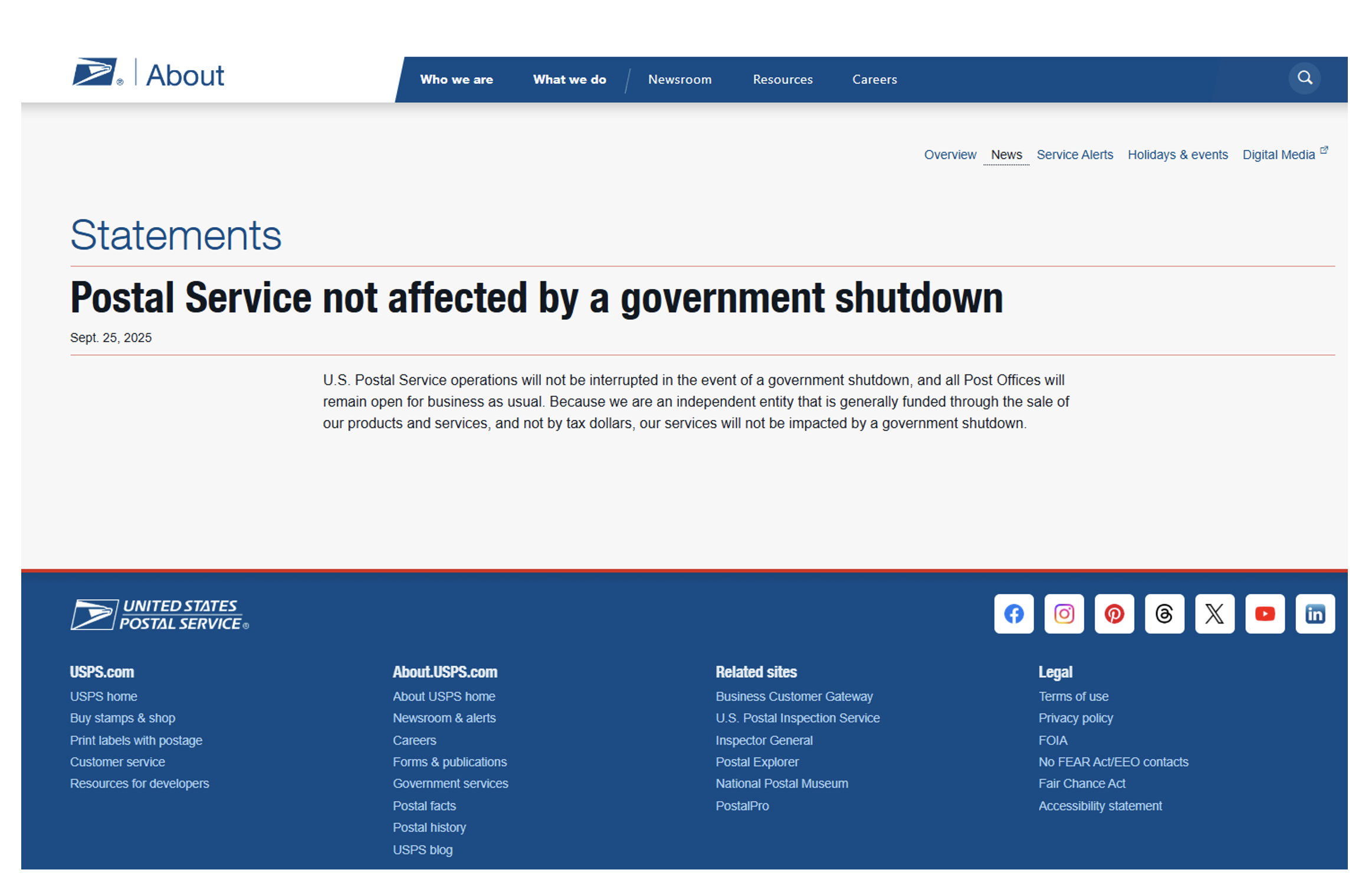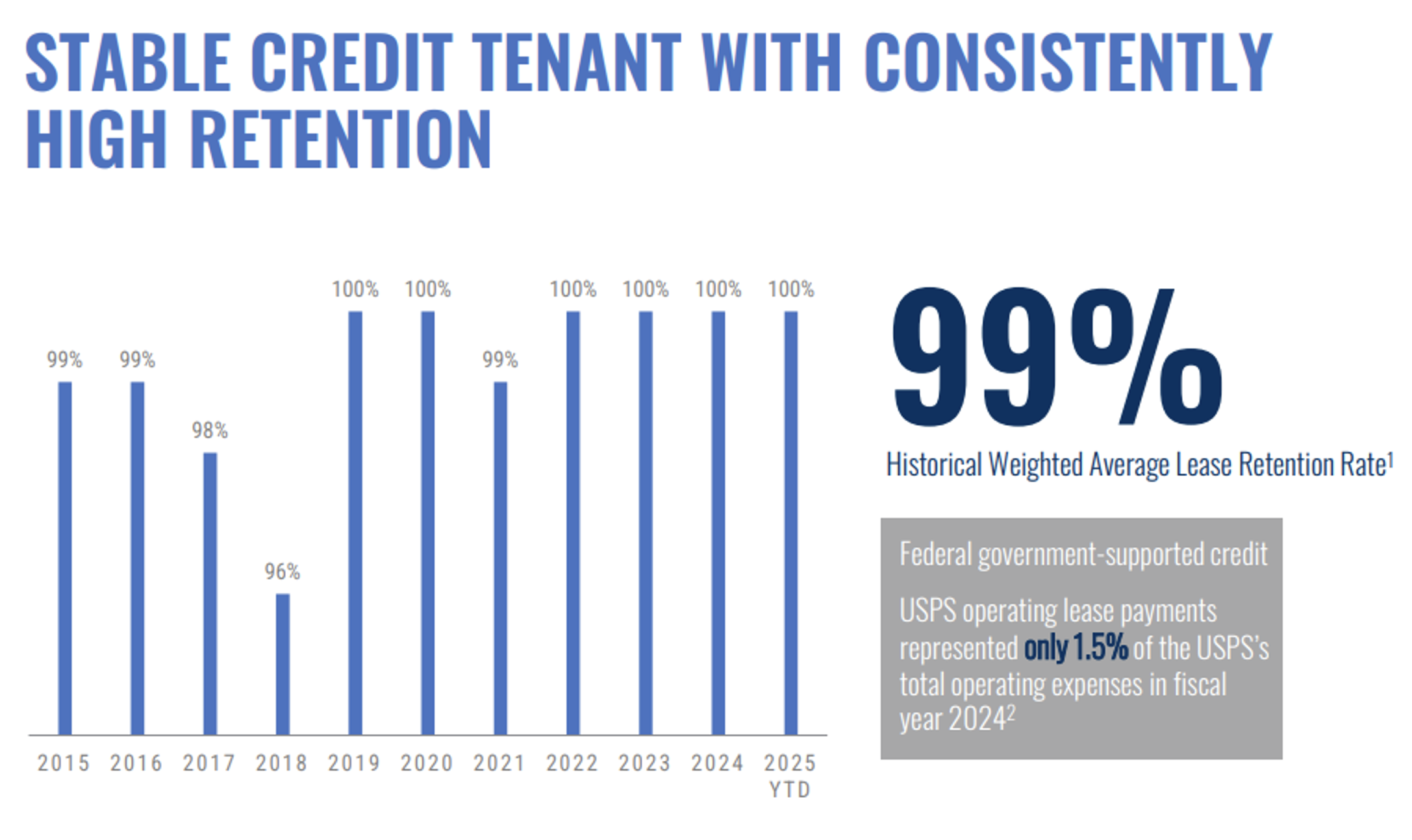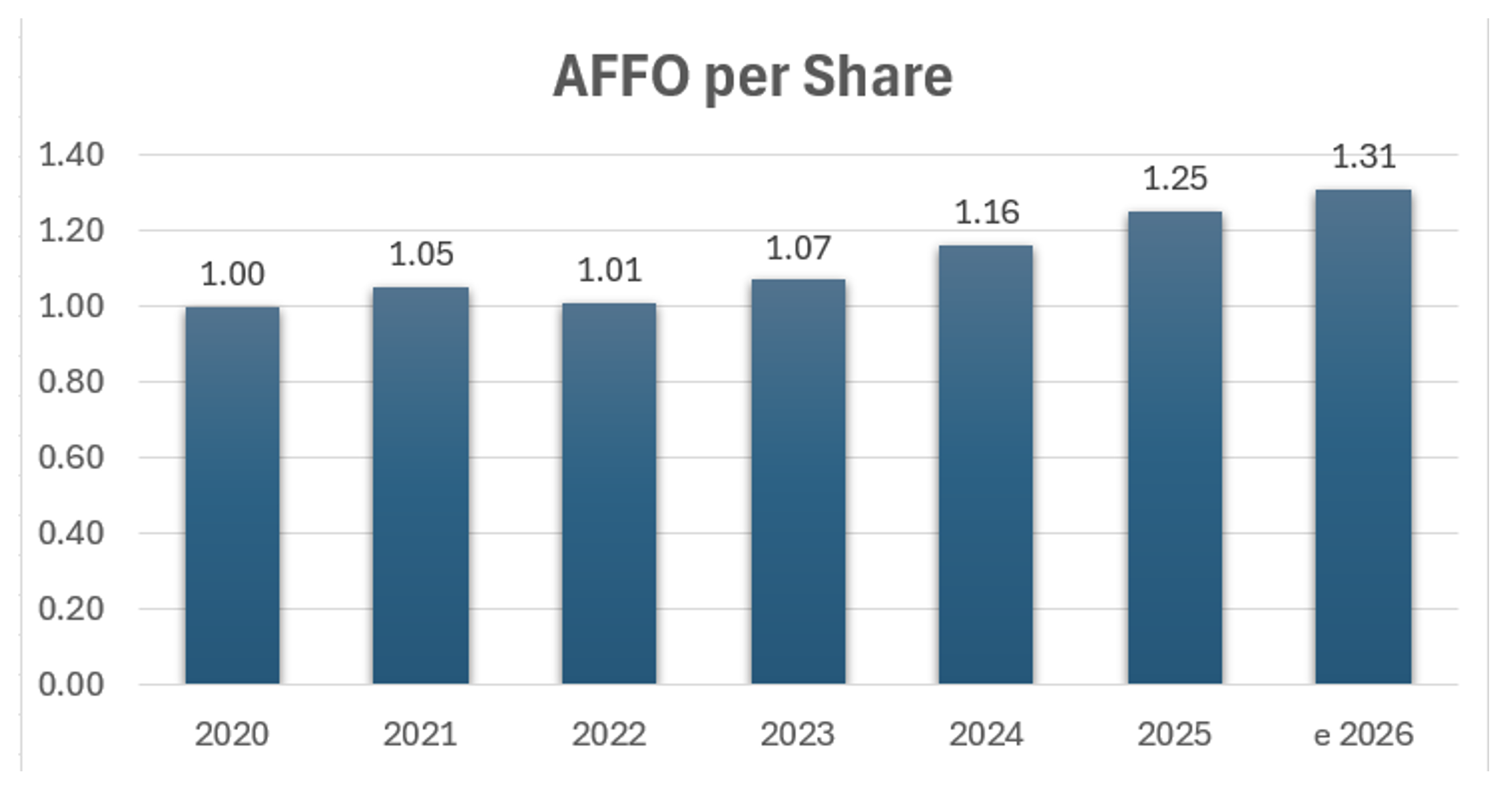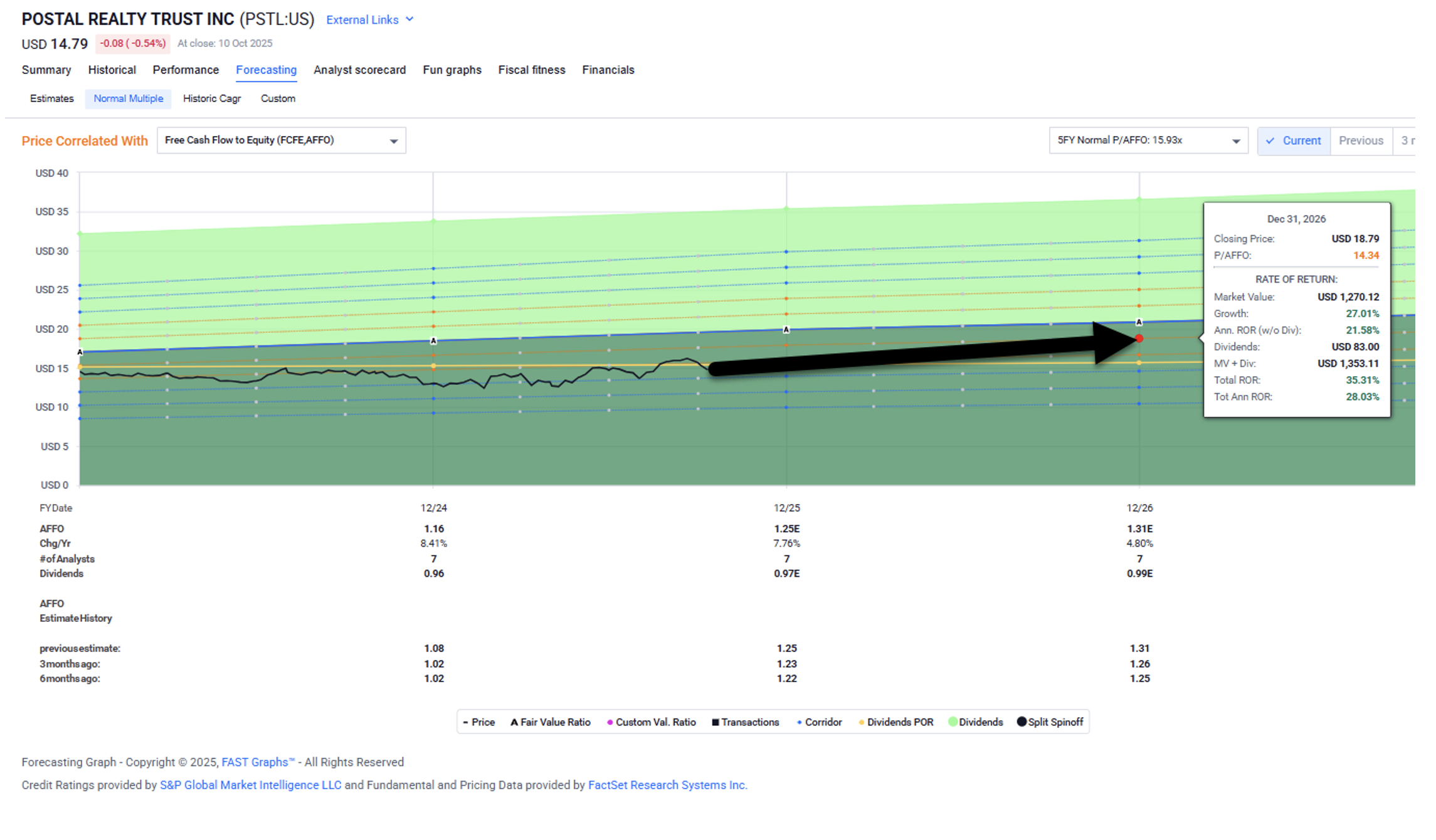Welcome day 13 of the U.S. federal government’s most recent shutdown.
In reality, it’s a partial shutdown. Despite the budget impasse, many federal agencies remain fully funded, at work, or both. Members of Congress, for instance, still get paid despite being the reason for the shutdown.
Regardless of which side you agree with (assuming you agree with either), something tells me this would get resolved much faster if congressional paychecks were on the line.
But for our purposes today, there is one group of federal associates that remains hard at work.
That would be…
The United States Postal Service (Like It or Not)
Technically, the United States Postal Service, or USPS, is not a federal agency. As USPSOIG.gov notes:
… beginning in the 1970s, the Postal Service largely stopped receiving any taxpayer money. Postal operations are instead funded by sales to you, the postal customer. Now it depends almost entirely on sales to keep the lights on.
What it doesn’t mention is the $107 billion the U.S. government gave it in 2022 to keep it afloat. That’s because, as the American Enterprise Institute explains, “the USPS remains embedded in the American economy.”
Publishing companies annually send 681 million copies of magazines and journals through the mail. Small businesses and community newspapers rely on the USPS to deliver advertising flyers, particularly in rural areas. A 2019 survey found pharmaceutical companies delivered 170 million prescriptions by mail each year, a number that likely has gone up as America’s population has gotten bigger and grayer.
Government agencies would also be left scrambling. In 2024, the USPS delivered 99 million ballots, including those cast by military personnel stationed overseas. State governments use the Postal Service to send residents new license plate tags and jury duty summonses. The U.S State Department relies on the Post Office to make passport applications services accessible to most Americans.
The USPS even plays a role in homeland security. In the event of a biohazard attack, the agency is tasked with delivering medicines to those who are affected.
In short, this quasi-government agency isn’t going anywhere anytime soon, no matter how many bailouts it takes. So, it stands to reason that anyone who signs it on as a tenant should have an equally stable source of rental income – regardless of whether the government shuts down or not.
That’s why I like the looks of Postal Realty Trust (PSTL). A real estate investment trust (“REIT”) landlord, it leases space exclusively to none other than the United States Postal Service.
And that gives it a surprising amount of stability that investors might find appealing.
Source: USPS Website
A Differentiated REIT
Postal Realty, a net-lease REIT, owns 1,829 properties in 49 states. That amounts to over 6.8 million square feet of rentable space.
It’s also the only publicly traded landlord that focuses exclusively on providing properties for the U.S. Postal Service. And that alone gives it some very interesting metrics to work with.
There are more than 31,000 USPS facilities around the country, covering every state, city, and town. Serving nearly 169 million addresses, it delivers more mail than any other country’s postal service.
It operates within approximately 100 million square feet of space, 92 million of which is privately owned. Postal Realty rents out 6.8 million, representing around 7% of that total.
That leaves a lot of room for growth.
Postal Realty has acquired more than $600 million in real estate over the last seven years at or below replacement cost. In addition, as shown below, it has consistent retention with a historical 99% average lease retention rate.
Source: Postal Realty
In the second quarter of 2025, Postal Realty completed $36 million of acquisitions at a 7.8% weighted average cap rate. And it did that while decreasing its leverage. Net debt to annualized adjusted earnings before interest, taxes, depreciation, and amortization went from 5.2 times at the end of 2024 to 5.1 times.
The company has also generated consistent earnings growth, as marked by adjusted funds from operations (“AFFO”). And analysts expect 5% growth in 2026 and 2027.
Source: Wide Moat Research
I’ll also point out that Postal Realty’s dividend yield is a juicy 6.5% that’s well-covered with a 78% payout ratio.
Given this REIT’s revenue predictability and lower leverage – plus its quarterly dividend growing 73% since the third quarter of 2019 – I suspect it will continue to grow its dividend by around 5% per year.
Better yet, Postal Realty shares are cheap, trading at 12 times its AFFO compared with its normal valuation of 15.9 times. It’s also cheap compared with its net-lease REIT peers, too:
-
Realty Income (O) at 13.7 times
-
NNN REIT (NNN) at 12.2 times
-
VICI Properties (VICI) at 13.2 times
-
W.P. Carey (WPC) at 13.7 times
Although Postal has already outperformed these peers year-to-date, we see more upside still. Shares are forecasted to return 20% or more over the next 12 months between its 6.5% dividend, 5% growth, and price appreciation.
Source: FAST Graphs
So, who’s afraid of the government shutdown dragging on?
It’s certainly not Postal Realty. Or its investors.
Regards,
Brad Thomas
Editor, Wide Moat Daily
|





